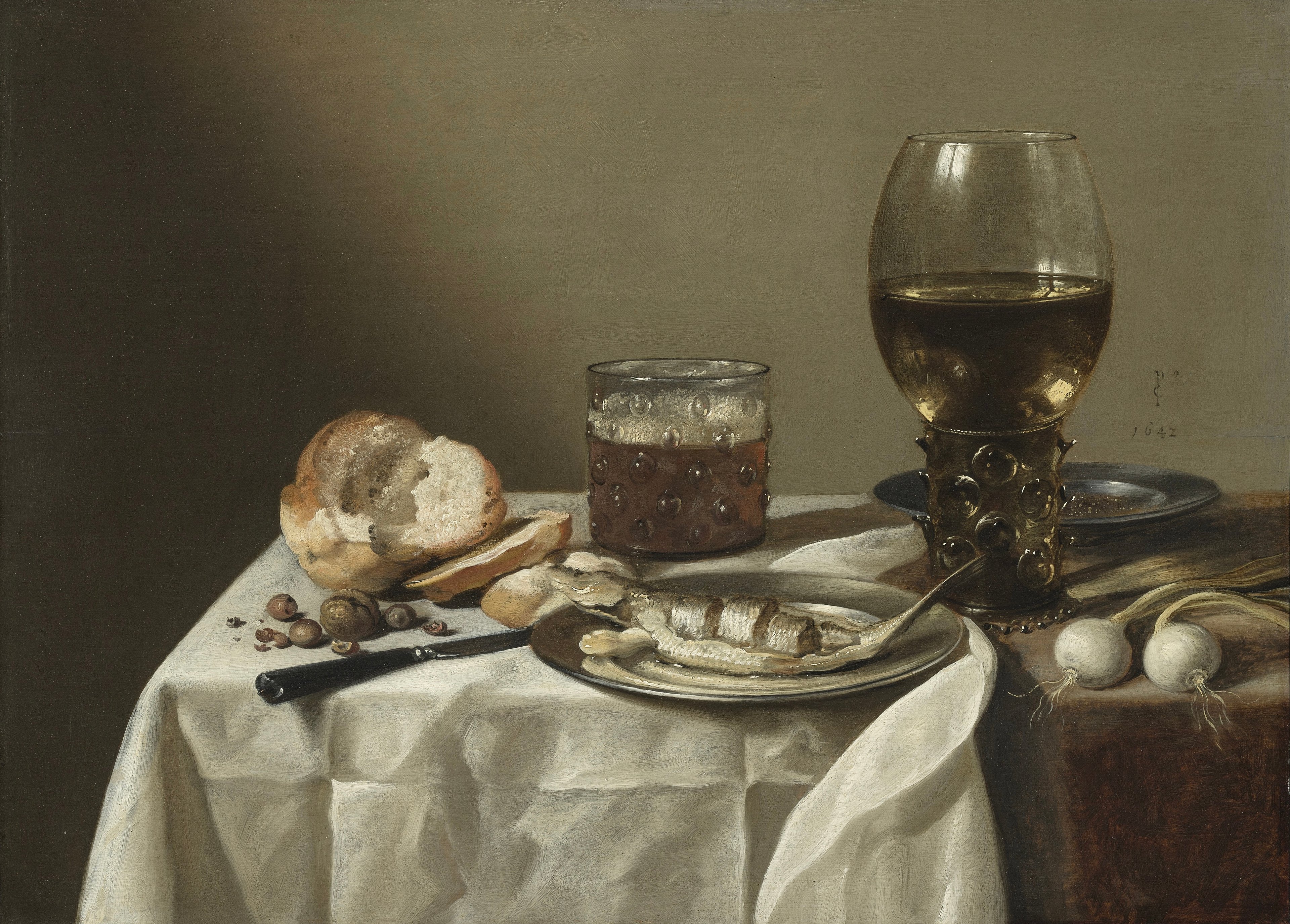
Pieter Claesz revolutionized the Dutch still life with his monochrome “banketjes”. In reduced colors and clear compositions, masterful craftsmanship and religious symbolism combine to create a quiet insistence.
Quiet devotion in grey and ochre
Captured in muted shades of grey and ochre, the simple but striking ensemble here consists merely of a few examples of food accompanied by drinking glasses which are also dark but highlighted by subtle light reflections. This austere-looking composition exemplifies the genre of het monochrome banketje (Dutch for “the little monochrome meal”) which denotes the special significance of Pieter Claesz in the development of Dutch still life art. The extremely sparse deployment of a few colours with reduced luminosity is far removed from the opulent, multi-layered still lifes that are depicted in exuberant colourful splendour, yet which at the same time admonish excessive lifestyles.
The restricted, even unpretentious choice of objects together with their perfect reproduction testifies to more than simply artisanal brilliance. Rather, it points to a religious reference: the bread and wine allude to the Last Supper which Christ and his disciples held as a prelude to the story of the Passion; the fish stands for the stringent dietary obligations of Lent. Such messages were readily understood in the strictly Protestant milieu of the Netherlands, which viewed its claim to legitimacy – and even its status as a chosen people of God – as founded in the Bible.
Like many of his Flemish compatriots, the painter hailing from Berchem near Antwerp moved to the Protestant north of the Netherlands. In 1621 he arrived in Haarlem, where another native from Antwerp, Frans Hals, was probably his most revered professional colleague.
Text: Ulrich Becker